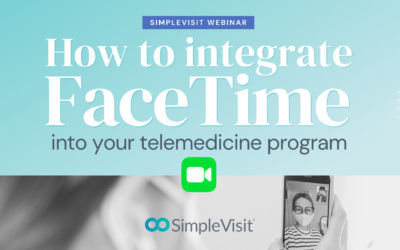Telehealth Coding 101
We often get questions about how to bill insurance providers for telehealth services. Practices that wish to utilize the benefits of telemedicine also wish to be adequately compensated without jumping through a bunch of hoops. The answer to billing for telemedicine can be complicated since there are consistent policy updates on a state and federal level that enact new laws and regulations on the subject.
But the question still remains: “How do I get paid?” If you are practicing in a Parity state, then private payers are required to reimburse telemedicine appointments just as they would on-site visits. However, there are slight changes in the billing procedure that your practice should be aware of.
The following is an overview of coding for telemedicine services. Utilize this information as a starting point to begin getting reimbursed for virtual care.

Current Procedural Terminology (CPT) codes are the way that insurance companies identify the specifics of what a doctor did with a patient in any given visit. Each one has a set fee attached to it, which varies per insurance company. Each insurance or payer covers a certain number or scope of CPT codes, and whether one is covered can also be dependent on which diagnosis code, or ICD-10 code, is attached to the visit.
The Centers for Medicare and Medicaid Services (CMS) releases a list of CPT codes that are covered for Telehealth for the coming year each year, finalized around November. Some private payers have a similar list published, but some you would have to call the company and check, especially if you don’t have access to the specific company or plan documents. Different plans within insurance companies also cover different things. However, the Medicare list is a great place to start, as most payers view Medicare as the “minimum coverage required” standard when it comes to reimbursement. We have the list of Medicare CPT codes in our new resources library, and there was a new proposed list released in July, to be finalized in November, for CY 2019.
Now, to make things more complicated, some insurance companies prefer Telehealth to be coded and billed in a different way than others do. Some want you to only use Telehealth specific codes, whereas some want you to use the general code for the service, whether it is in person or via Telehealth, and attached a modifier to it that denotes it as a Telehealth service. Also, there are codes for where the service is being delivered, called the site code or the “Place of Service” code (POS). Some payers require these to be specific to Telehealth and some prefer a modifier.

The book Current Procedural Terminology, put out by the American Medical Association every year, has every code for every procedure and every service offered by any type of medical provider. This is what medical billing and coding specialists use to take the doctor’s description of what was done within a visit from the chart and encounter notes, and turn it into a list of codes, that is then submitted to the payer that is attached to that patient, who reviews it and makes sure that they cover those services for the attached condition, and then uses those codes to determine how much they are going to pay the doctor for the services that they provided.
There is another set of codes, called the Healthcare Common Procedure Coding System, or HCPCS (commonly called “hick-picks”), that Medicare uses, Medicaid usually uses, and some private payers use. These are codes describing materials that are used, equipment, and also apply to the site that services are delivered at. There are also procedural codes, called “G” codes, as they all start with a G. These have Telehealth specific codes, as well as modifiers.
On the topic of modifiers, for services rendered before January 1, 2018, Medicare requires a GT modifier to be attached to all services rendered via telehealth, for CPT or HCPCS codes, but for services rendered after that date, Medicare no longer wants the GT modifier, but instead requires the Place of Service (POS) code 02: Telehealth to be used on bills for telehealth-delivered services. There are some exceptions for Community Access Hospitals and services delivered in Alaska and Hawaii.
In the 2017 version of the CPT, the AMA included a new modifier: “-95” that denotes that a service was rendered via synchronous audio and video communication and has been included in the subsequent yearly editions. This is the description of the -95 modifier from the CPT manual:
“Synchronous telemedicine service rendered via a real-time interactive audio and video telecommunications system: synchronous telemedicine service is defined as a real-time interaction between a physician or other qualified health care professional and a patient who is located at a distant site from the physician or other qualified healthcare professional. The totality of the communication of information exchanged between the physician or other qualified health care professional and the patient during the course of the synchronous telemedicine service must be of an amount and nature that would be sufficient to meet the key components and/or requirements of the same service when rendered via a face-to-face interaction.”
Appendix P of the CPT book has a list of telehealth-specific codes, or codes that are typically rendered face-to-face but can be rendered via synchronous audio/video telecommunications – these are the only ones that the modifier -95 can be applied to. Medicare is not yet using this modifier, but some states’ Medicaid programs and many private payers are. Because there are so many differences with how different payers like telehealth services to be coded, you always need to check with that specific payers’ requirements before submitting any codes for payment. As a rule, though, the codes in Appendix P are the ones that any given payer may accept for telehealth-rendered services, provided that payer covers telehealth for that diagnosis (ICD-10 code) or type of service.
How to Integrate FaceTime for Telemedicine
Rob Warlick | 3 min read | April 23, 2021During the public health emergency, direct FaceTime calls are permitted for healthcare. Outside of that waiver, SimpleVisit is the only HIPAA-compliant way to bridge in FaceTime and other video calling apps. With over 620...
Using FaceTime for Telemedicine in 2021
Rob Warlick | 4 min read | January 26, 2021 In response to the global pandemic and the public health emergency, many medical groups have purchased or crafted a solution to treat over video. Due to the lax in federal regulations, many are turning to commonly available...
Kindness and Healthcare
Allie Clark | 10 min read | December 2, 2020It is time for some kindness. The holiday season can be a rough time for many among us. A report from the National Alliance on Mental Illness shows that this time of the year negatively affects a majority of people suffering...




